MO Tested: Michelin Road 6 Tire Review

Improved wet grip and longevity in Michelin's popular sport-touring tire
While magazine editors and track riders may wax poetic about the leaps in performance of the latest super-grippy sport and track tires, the vast majority of sport-focused street riders spend their money on sport-touring rubber. Why? Well, two reasons, actually. First, once you look beyond the arid Southwest where the bulk of the U.S. motorcycle industry resides, riders have to deal with rain, making the way tires handle in the wet of great importance. Then there’s the fact that sport-touring tires offer almost the same level of grip as their sportier siblings – at street temperatures – while offering significantly better longevity. (At lower temperatures, sport-touring tires can offer more real-world grip than even the stickiest of sporting rubber, which are designed to work their best at elevated temperatures.) With the release of the Michelin Road 6 sport-touring tires, Michelin claim an increase in both wet grip and wear characteristics when compared to their precursors, the Michelin Road 5.
Michelin Road 6 Tires
+ Highs
- Great wet grip
- Excellent dry grip
- Impressive wear characteristics
– Sighs
- Pricey
- Don’t appeal to my vanity as much as the stickiest rubber available does
- That’s all I’ve got
The Recipe
The headlining claim in the announcement of the Road 6 tires was that they offer a 15% increase in wet grip. Michelin says this is the result of both updating the rubber compounds and refining the tread design. Silica has been known for its wet/cold weather grip for some time, but it hasn’t always played well with tire durability in dry, warm weather. The improvements in the durability of the silica compound comes from a combination of changes to the compound itself and the altered tread design.
MO Tested: Michelin Road 5 Tire Review
When the Michelin Road 5 was released, its wet grip was credited to the development of its X-Sipe technology. Essentially, the smaller grooves in the tire open up to a wider space as you go deeper within the rubber compound, and as the tire wears, the widening of the grooves allow for the tread to displace similar amounts of water. (You can read an in-depth explanation of it here.) Next, dubbed Michelin Water Evergrip Technology, the void ratio, the ratio of grooving to the rubber on the tire’s tread, was optimized to improve wear in both wet and dry conditions. Michelin claims that this, when combined with the X-Sipe technology, is not only responsible for the increase in wet grip, but also for the consistent behavior of the tires even when worn.
Riders who are familiar with the Road 5s, will remember that the front tire used Michelin’s 2CT carcass structure on the front and the 2CT+ on the rear. With the Road 6s, the front now receives the 2CT+ treatment, meaning that the firmer center tire compound now extends under the softer compound used on the sides. This additional support from the harder compound is said to contribute to front tire stability (thanks to less flex in the contact patch) when entering corners.
As with the Road 5 tires, the Michelin Road 6 tires will come in two versions. Most bike applications will use the standard Road 6; however, the beefier Road 6 GT tires are designed for the additional forces generated by larger, heavier, and more powerful grand-touring motorcycles (such as the BMW K1600 GT/GTL). To handle the additional stresses experienced by the tires, they get an additional ply sandwiched between the two plies used on the standard Road 6. This Michelin Reinforced Radial-X EVO ply helps prevent tire deformation during cornering.
The Result
Although I don’t have a set of Road 5s to do a direct comparison, the Road 6 tires, when mounted on my KTM 790 Duke, appear to have a slightly rounder profile. My memory from riding the tires supports this, but the change is slight, with the turn-in being a bit more predictable (which is not to say that the Road 5s fell into corners). While not as snappy steering as hyper-sport tires, the Road 6s handled every type of corner I threw at them in my local SoCal stomping grounds. Constant-radius, decreasing-radius, off- or positive-camber, single, or linked corners, the Road 6 steered precisely and allowed mid-corner corrections without complaint. The speeds I was riding – as were the roads – were the same as the ones I used when running the more sporty Michelin Power RS tires. Frankly, at street speeds, I don’t think I could tell the difference between the two tires. When leaned over on their edge, the Road 6 tires feel just as planted – again, on the street. However, unlike the Power RS (or their replacement the Power Cup 2), I wouldn’t run the Road 6s at a track day.
But I’m burying the lede with the Road 6’s wet weather performance. During my testing, despite the drought conditions in California, I got a chance to test the tires in some pretty epic rains. The conditions ranged from merely wet pavement to actively rained on pavement to pavement with varying levels of standing water (up to several inches deep). Taking the Road 6s out on a rainy canyon ride revealed excellent traction, allowing leans as far as I was willing to test (which was reasonably far by the end of the ride). The only time the tires squirmed was when the water was actively running from one side of the road to the other and had washed some barely visible sand onto the surface. I came back from my wet weather testing extremely impressed with the tires and would recommend them for people who frequently ride in the rain.
And the longevity claims? All I can say is that after 2,500 miles of sporty riding, the Michelin Road 6 tires still look pretty dang new. Surprisingly new, in fact. I haven’t babied them, either.
| Michelin Road 6 Available Sizes | |
|---|---|
| Front | Rear |
| 110/70ZR17 54W | 140/70ZR17 66W |
| 120/70ZR17 (55W) | 150/60ZR17 66W |
| 120/70ZR17 (58W) | 150/70ZR17 (69W) |
| 120/70ZR18 (59W) | 160/60ZR17 (69W) |
| 110/80ZR19 (59W) | 170/60ZR17 (72W) |
| 120/70ZR19 (60W) | 180/55ZR17 (73W) |
| 190/50ZR17 (73W) | |
| 190/55ZR17 (75W) | |
The Recommendation
Since I primarily ride my 790 Duke on canyon roads, I have previously run the stickiest rubber I could get. Unfortunately, that meant that my No-Mar Tire Changer was getting lots of use. The Michelin Road 6 tires have made me rethink this approach because of the similarity in street performance and the longevity I have experienced so far. Michelin Road 6 tires come in a wide variety of sizes to fit lightweight sporty bikes to heavyweight sport-touring rigs. Front tire prices range from an MSRP of $262-$289, and the rear MSRP is $291-$401. So, Road 6 tires aren’t cheap, but if they continue to wear as well as they are for me now, the investment appears to pay off in the long run. If you’ve had any experience with Road 6s, let us know in the comments.
FAQ
Are Michelin good tires?
Michelin tires are ranked among the top premium motorcycle tires available. If you doubt their quality and commitment to new technology, consider this: Michelin provides the spec tires to MotoGP as a means of furthering their development. If Michelin tires are good enough for the fastest riders in the world, we mere mortals will probably be quite happy with their performance, as the review above demonstrates.
When did Michelin Road 6 come out?
The Michelin Road 6 tires were first available to the public on January 1, 2022.
What is the difference between the Michelin Road 6 and the Road 6 GT?
The difference is the inclusion of an extra ply in the rear tire to handle the extra weight of heavyweight sport-touring motorcycles. The compounds and tread design used in the tires are identical.
Additional Resources
Best Sport-Touring Tires To Take You The Long Way To Anywhere
Michelin Introduces The New Road 6 Tire For Sport Touring Motorcycles
Black Magic: Motorcycle Tires
Michelin Motorcycle Tires: Everything You Need To Know
We are committed to finding, researching, and recommending the best products. We earn commissions from purchases you make using the retail links in our product reviews. Learn more about how this works.
Become a Motorcycle.com insider. Get the latest motorcycle news first by subscribing to our newsletter here.

Like most of the best happenings in his life, Evans stumbled into his motojournalism career. While on his way to a planned life in academia, he applied for a job at a motorcycle magazine, thinking he’d get the opportunity to write some freelance articles. Instead, he was offered a full-time job in which he discovered he could actually get paid to ride other people’s motorcycles – and he’s never looked back. Over the 25 years he’s been in the motorcycle industry, Evans has written two books, 101 Sportbike Performance Projects and How to Modify Your Metric Cruiser, and has ridden just about every production motorcycle manufactured. Evans has a deep love of motorcycles and believes they are a force for good in the world.
More by Evans Brasfield







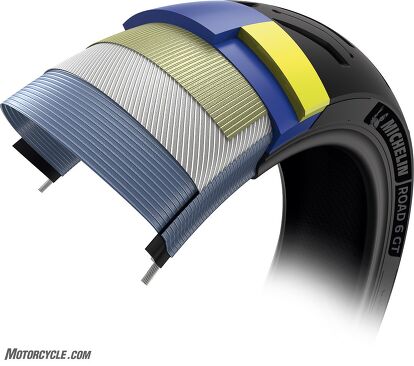

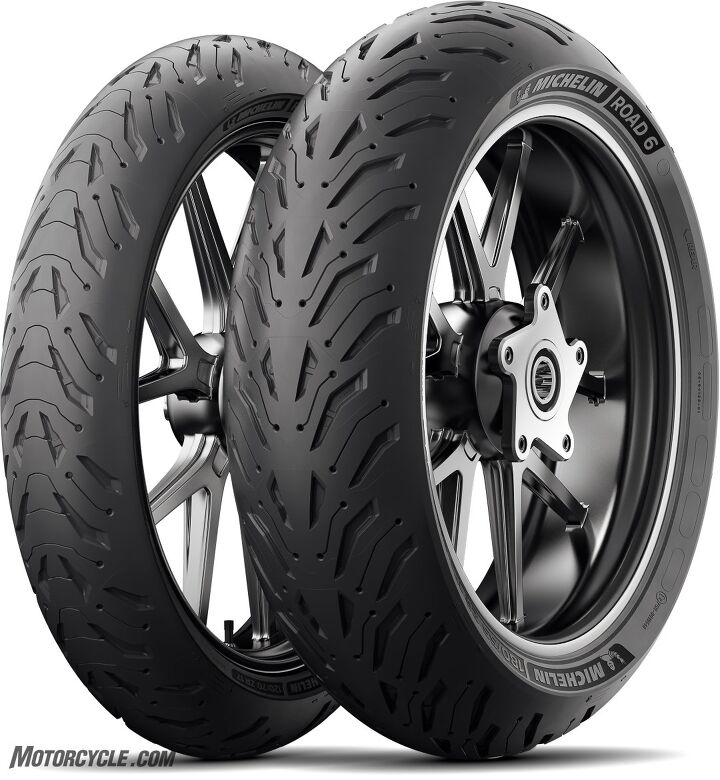










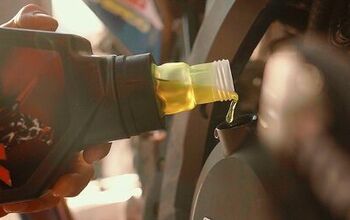
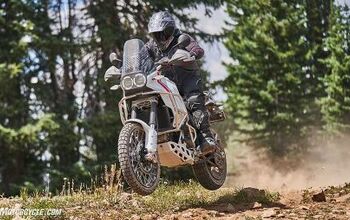






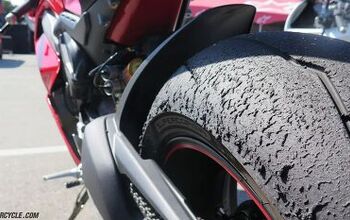








Comments
Join the conversation
I live in Thailand and they are the best tires I have been on. I've raced and rode for 50 years. I can't believe how good they are in the wet. I haven't put 500 miles on them yet but they stick when they shouldn't. I've read that Dunlops are as good but I will not ever get anything but these. These tires can save your life. They also stop faster than my Angel GT IIs.
My Tiger Sport 660 came with Road 5s, which I was not a huge fan of. They hit the wear bars at 5500 miles and were replaced with the Road 6. Slightly softer and grippier, a nice match to the lighter (450lb) Tiger. Just hit the wear bars at 6500mi in spots, the rest of the tire still has plenty of tread, and handling is still good. I'll be getting another set!